
Shoshana Ostrovsky with Mr. Nachum Hofree, Mayor of Raanana
What fulfillment to be able to witness the rise and development of a city like Raanana from its earliest days until today's gem of the Sharon. Shoshana Ostrovsky-Goldberg, daughter of the legendary pioneering mayor of Raanana, has written an inspirational story of her life and times in a book marketed through Fabian book store and her granddaughter's shop, Elinor, 120 Ahuza street in Raanana.
Shoshana's father, Baruch Ostrovsky, an ardent and active Zionist, was one of the first to join Ahuzat A. in Brooklyn, New York with the intention of purchasing land in Palestine and preparing for actual settlement of families from North America. Each of these founding families paid five dollars a week into a fund, and by 1930 representatives set out to decide where their future community would be based. Ostrovsky, principal at the time of the Workers’ Circle educational projects in New York and New Jersey areas, and a teacher of Bible and Hebrew, came to Palestine and worked for nine months in the orange groves then being planted in the Raanana area. He also managed to write a book about the colorful "Shomrim" guards in the northern settlements during this time.
Returning to New York, Ostrovsky sold the family home and furniture, packed up his library of more than 4000 books and arranged passage for his wife, twelve year old daughter, Shoshana, and six year old son. Those of us who have made aliyah can only admire the determination and courage of these first families who had to have had enormous faith and foresight to dare the challenges of the unknown. The Ostrovsky family departed on May 28, 1930 on the S. S. Bryan, stopping in Athens, Beirut, and Alexandria sailing through choppy seas before docking off Tel Aviv- Jaffa on June 28th, a long one month's voyage. Shoshana recalls that the ship's passengers were literally tossed by Arab stevedores into small rowboats and taken to shore since the ship was unable to come into port.
Once in Tel Aviv, a bus was arranged to transport the Ostrovskys and two other families from America to their new homes. This bumpy trip took several hours. What did they see upon arrival? Sand, sand and more sand.
Raanana's population in 1930 numbered 400 people. After failed attempts to grow tobacco and to develop dairy cow production, it was decided to grow oranges so that most of the agriculture was based in the groves. So the newcomers saw small houses, really huts, with orange groves in the backyards. Ahuza street, named for the founding fathers of the settlement, already existed but as yet, were not paved. There were no trees, no sidewalks, no schools, nothing much to look at. On the other hand, neighbors were very hospitable and cooperative, welcoming the new arrivals with eggs, milk and oranges.
As a twelve year old girl who had loved school in America, naturally Shoshana's concern was how and where she would be going to school. Her class consisted of five pupils and she was promoted to eighth grade, skipping the seventh grade. Her teachers, Mr. Meged and Mr. Bar Tov, the principal, gave her personal attention, helping her learn Hebrew and especially "Tanach", since Bible studies had not existed in her school in New York. Within a year she graduated with a diploma and was ready for high school studies.
Since there was no high school in Raanana, her father, as a strong supporter of Polaei Zion, wanted his daughter to study at an appropriate track school which meant that Shoshana found herself with another Raanana girl living with a family in Tel Aviv and attending Balfour high school. Studies were fine, but Shoshana missed her family terribly. One Friday, she recalls, the two girls noticed the wagon of the baker, Onker, who had been sent to Tel Aviv to buy flour. The girls begged him to take them home to Raanana and he agreed; the journey from Tel Aviv to Raanana took seven hours. Onker covered the girls with canvas as the wagon approached the Yarkon area, an inhospitable and dangerous place for young girls to be.
Shoshana still remembers how angry her parents were when she arrived home at about 10pm. However, her parents then realized that she had to live at home from that point, and ride on the 7am bus to Tel Aviv daily instead. What a day in the life of a young girl! Assigned night watch on the water tower for the Haganah because she knew Morse code, a few hours of sleep, 7am on the bus with a sandwich her mother had prepared, the two hour ride to school, a full day of classes, and then the repeated long two hour ride home by bus.
After completing high school Shoshana continued learning at the Lewinsky Seminar located between Tel Aviv and Jaffa. Her English teacher who was British, clearly did not like her American accent, and forbade her from talking in class. She didn't mind since she was able to attend the Arlosoroff trial in Jaffa during English lessons.
Upon completing her studies at the seminar, and as a graduation present, her father bought a ticket for her to visit their family in New York. Little did Shoshana know that this visit would turn into a far more extended trip than originally planned. With the outbreak of World War II, she found herself in New York with her aunt and uncle. Fortunately, she was able to use her fluent Yiddish to become a teacher at the Workers’ Circle school and a counselor in the Yiddish summer camp, where she met her husband. They married and had two daughters. In 1949 Shoshana insisted on returning to Israel, and she and her family moved back to Raanana where her husband built a tin factory.
Although she had planned on teaching Hebrew in Israel, Shoshana accepted the challenge of teaching English at the Yavne school where she remained for seventeen years. Later she transferred to the Kfar Batya school, where she continued teaching English to another generation of students for an additional twelve years. Known as "The English Teacher", looking back she says she loved teaching and loved her students. She never had problems with discipline because she was strict, but fair. Her students would stand and wait for her to enter the classroom. She came to school with the intention of working, and she returned test papers the following morning. She was always willing to explain the subject more than once if necessary. Obviously proud of the reputation built up over many years of teaching, prouder still is Shoshana of her daughters’ successes, and of her granddaughter, a professor of medical research at Columbia University.
Despite several family tragedies including the early death of her brother and the tragic death of a granddaughter in a traffic accident nine years ago, Shoshana Ostrovsky-Goldberg is a very positive individual, a personal witness to the opening of the 21st century and the development of the city her father was so instrumental in founding. "I like Raanana. It turned out well", she says with admirable understatement.
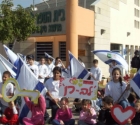 LEV-RAN SCHOOL: A LOVE STORY (new)
LEV-RAN SCHOOL: A LOVE STORY (new)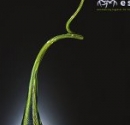 DEAR EDITOR 154
DEAR EDITOR 154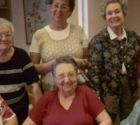 KNITTING CLUBS: TEL AVIV'S KNITTING & CROCHET SOCIAL CIRCLE
KNITTING CLUBS: TEL AVIV'S KNITTING & CROCHET SOCIAL CIRCLE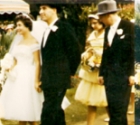 Bridesmaid recalls a very special day 59 years ago
Bridesmaid recalls a very special day 59 years ago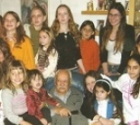 Harry Berman
Harry Berman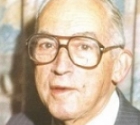 Sam Levin
Sam Levin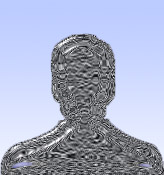 Adrian Kleiman
Adrian Kleiman